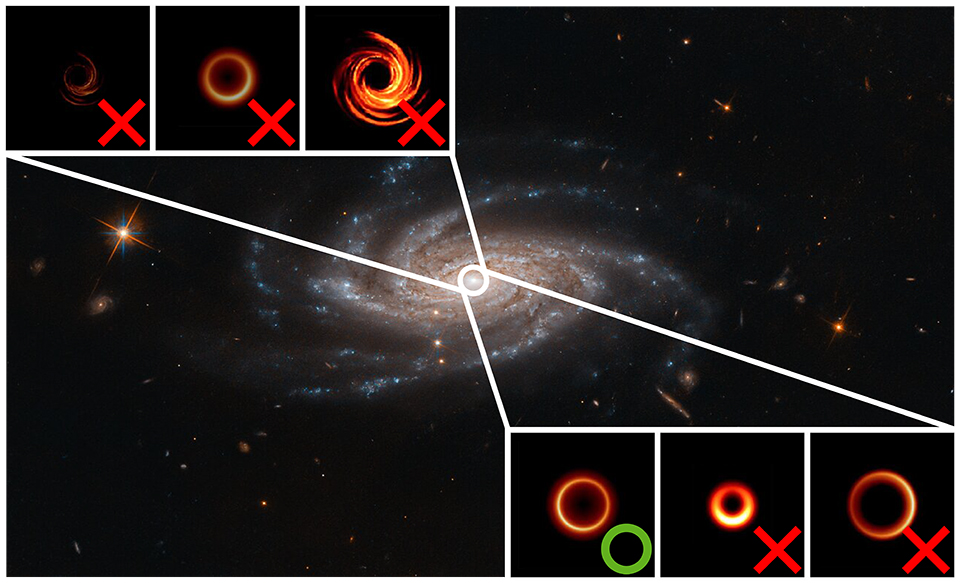
Machine learning has deduced the rules governing the relationship between the growth of a galaxy and the growth of the supermassive black hole at its center. The tight correlation between the two growth rates found in this research confirms a decades-old theory.
Most, if not all, galaxies are thought to harbor a supermassive black hole at their center. These black holes have masses greater than 100,000 times that of the Sun, up to even millions or billions of times more massive than the Sun. Astronomers have wondered how these behemoths grow so fast, and how they form in the first place.
Haowen Zhang (University of Arizona) and Dr. Peter Behroozi (NAOJ and University of Arizona), the lead authors on a new study, built a machine-learning framework in which computers would propose new rules for how supermassive black holes grew over time, use those rules to simulate the growth of billions of black holes in a virtual universe, and finally "observe" the virtual universe to test whether it agreed with observations of black holes in the real Universe. After trying millions of rulesets, the computers chose the rules that best describe existing observations.
The results show that supermassive black holes grew most vigorously in the first few billion years of the Universe, and then grew much more slowly since then.
"We've known for a while that galaxies have this strange behavior, where they reach a peak in their rate of forming new stars, then it dwindles over time, and then, later on, they stop forming stars altogether," says Behroozi. "Now, we've been able to show that black holes do the same: growing and shutting off at the same times as their host galaxies. This confirms a decades-old hypothesis about black hole growth in galaxies."
However, the results pose more questions. Black holes are much smaller than the galaxies in which they live. If the Milky Way were scaled down to the size of Earth, its supermassive black hole would be the size of the period at the end of this sentence. For the black hole to grow at the same rate as the larger galaxy requires synchronization between gas flows at vastly different scales. How black holes conspire with galaxies to achieve this balance is yet to be understood.
These results first appeared as Zhang et al. "TRINITY I: Self-Consistently Modeling Halo-Galaxy-Supermassive Black Hole Connection from z = 0-10" in Monthly Notices of the Royal Astronomical Society on October 16, 2022, with an edited version published on November 25, 2022.






